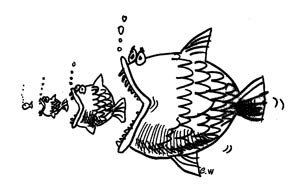|
|
Food and Behaviour - expert research workshop |
Held under the aegis of the McCarrison Society and FAB Research. |
Dr Joseph Hibbeln, chief of the Outpatient Clinic at the National Institute on Alcohol Abuse and Alcoholism in Maryland, USA, detailed the work he has done on the Avon Longtitudial Study of Parents and Children (ALSPAC) survey findings in relation to the consumption of seafood by pregnant mothers.
A similar study in the Seychelles where people eat a lot of fish (not including pilot whales) did not confirm such damage; nor does the long-term experience of the Japanese who eat fish and seafood almost every day and often more than once a day.
The point about the bigger fish is that they eat smaller fish that have eaten smaller fish etc. The big fish therefore collect with compound interest the pollution of all the smaller ones. Labels (1) Maternal seafood consumption in pregnancy and neurodevelopment outcomes in childhood (ALSPAC STUDY): an observational cohort study. Lancet 2007;369;578-585
First Published in October 2007 |














